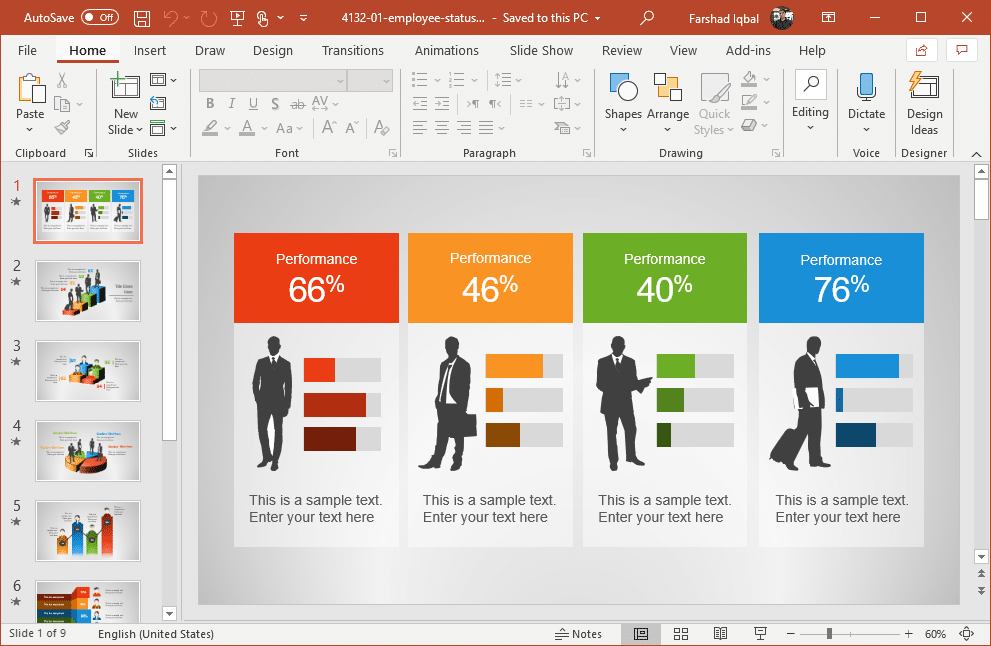Key Components for Preparing a Compensation Plan
Last updated on September 29th, 2024

When considering a job offer there are various things people look at to determine if the job offer is worth accepting. Once a job offer is received, an employee might look at the required hours of work, working environment, safety conditions at the workplace and the compensation plan. In this post we will provide you with key components for preparing a compensation plan and a list of the various types of plans used by organizations.
What is a Compensation Plan?
A compensation plan provides details regarding an employee’s salary, bonus, benefits and terms and conditions of receiving payment. Organizations use compensation plans to account for accurate workflows, to save time and minimize costs. Compensation plans also need to be in line with the budgetary limitations of an organization. Compensation plans offered by organizations depends on the type of work, market conditions, availability of the required skill set and employee demands.

Why is a Compensation Plan Important for Employees and Employers?
Compensation plans have been an effective mechanism for attracting the most skilled workforce by large corporations. Organizations like Google with their attractive compensation plans and associated benefits, such as free lunch, play areas and flexible working hours, have been able to create a culture where employees stay in the office for extended hours. This has also been criticized for luring people into a culture where people have been lured to work throughout the week.
On the contrary, other organizations like Microsoft have been testing a 4 day work week to boost productivity. These subtle, but significant changes in corporate culture are often tied into the compensation plan, as employees look to work harder to achieve perks and benefits linked with high productivity.
Organizations offering attractive compensation plans are also a double-edged sword. Employees can be lured into a trap of working virtually seven days a week in the hope of better perks and just to keep their jobs. Employees deemed less productive are easily removed, sometimes after being exhausted and burned out in a short time span.
An effective compensation plan ideally accounts for a balance of a decent pay, bonus, benefits and high-end productivity, with adequate scope for acquiring days off work for rest and leisure. However, finding the right balance is often hard, as employees often realize the true cost of attractive salaries and benefits once they reach the burn out point. The flip side are organizations unable or unwilling to pay attractive salaries, in exchange for jobs with fewer benefits and low-end productivity.
Key Components of a Compensation Plan
If you have been tasked with making a compensation plan for your organization, you might want to look into the key components of a compensation plan.
Salary and Wages
Salary and wages make up of the most important parts of compensation plans. This is also usually the deciding factor by people looking to join an organization. A glance at the offered salary or wage is usually the determining factor for a potential employee accepting a job offer. A comprehensive wage analysis is required to make an effective compensation plan, and this can be part of a salary survey management.
Bonus
A bonus can be a great way to boost productivity by offering something extra to employees in the hope of achieving better productivity. Bonuses can be offered as a lump sum payment or through profit sharing schemes by organizations.
Long-term Benefits
There can be a number of long-term benefits offered to employees in the form of stock options, an increase in provident fund incentives and other benefits to retain productive employees.
Work Schedule and Vacations
A compensation plan also provides details of the days off for sick leaves, casual leaves and annual vacations. There might also be flexible work hours and different work schedules offered to different employees.
Health Insurance
Many organizations offer health insurance or some type of health-related benefits to employees. In some countries this is mandatory, whereas employees engaged in the informal sector or working on short-term contracts can often end up being excluded from such benefits.
Miscellaneous Benefits
Some organizations offer discounts for employees on their products, some managers get company cars, whereas some employees might be allowed to buy their laptops at a discounted rate after a few years. The compensation plans also include such additional benefits (if any) offered by the organization.
Retirement Plan
Retirement plans include various types of benefits for retirement such as gratuity and investment plans such as 401(k) plans which divert a portion of the employee’s earning for long-term investment.
Popular Compensation Plan Models
1. Straight Salary Compensation
A straight salary compensation entails paying the employee the salary or wage based on their job type and skill set. It is a fixed salary with no incentives or commissions. This model is often used for salespersons. A straight salary can later be incentivized for high performing employees to shift them from a straight salary to a salary plus commission model.
2. Salary Plus Commission
A salary plus commission model enables employees to earn a base salary, with the added advantage of potentially earning a commission if they achieve certain goals, e.g. achieve a sales target.
3. Residual Commission
This is a compensation plan which provides the employee commission as long as his/her accounts continue in generating revenue. The employee gets paid according to a pre-determined scheduled which lasts beyond just the initial sale.
4. Commission Only
This model pays employees after they have reached a commission target. Other than sales, this model is also used by affiliate programs which pay on the basis of sales generated by affiliates, especially after reaching a certain threshold.
5. Revenue Based Compensation Plans
This model is famous among startups, who share a margin of the revenue of their profits with employees. Such an organization might also provide stock and equity options for employees.
How To Present a Compensation Plan
There are a number of ways you can present a compensation plan. It can be in the form of documents emailed with an offer letter, in the form of a presentation or during a face to face meeting. Regardless of which method you use, you should include a few basic details in the compensation plan.
Provide a Job Description
Other than the salary, wages, benefits and bonuses, you should also provide a detailed job description so that the employee knows what he/she is expected to do and against what financial benefits.
Clearly Mention All Benefits and Deductions
Sometimes an employee might be given a specific amount as the salary to be paid to them. The primary figure in such a case can be misleading, since it might include deductions such as tax, provident fund payments and deductions for late arrival and absenteeism. All benefits, deductions and actions which might lead to the salary being docked or a reduction in benefits should be clearly stated. The person to whom the details are presented should have adequate time to process the information and ask questions.
Explain Organizational and Individual Goals
A job is not just about financial benefits and day to day work. One needs to be mindful of the organization’s short-term and long-term goals, as well as the goals the individual is expected to achieve. Large organizations in particular have very specific long-term goals that they intend to strictly follow.
Grounds for Termination of Employment
While not something you would specifically find in a compensation plan. The grounds for termination of employment are important to explain to potential and incoming employees.
Employees not up to the mark can be terminated, usually on a short notice. This is why it is essential that the employee understands what might be cause for termination, be it their inability to reach certain goals, disciplinary action or their lack of sensitivity to key issues the organization aims to address. The latter might include gender insensitivity, lack of responsiveness towards customers or the employee’s tendency to be racist and politically vocal. All of which can negatively affect the organization’s repute.
Many employees in recent years have been fired merely because of a single Tweet which was deemed distasteful. Organizations usually add social media ethics or related grounds for termination in the HR manual for this purpose.
Note: To create compensation plan presentations, you can use the Employee Skills PowerPoint Template.

Conclusion
The compensation plan that your organization offers needs to be in line with the organization’s goals, long-term strategy and the return on investment. Even if an organization cannot afford to hand out exclusive benefits to employees, performance-based benefits can be a great way to motivate them and to drive productivity. Large businesses like the online retailer Amazon has gone a step further and even offered its employees to quit their jobs to start a delivery service for delivering Amazon products. The company is even offering funding to help employees’ startup their business.
Many startups like Google and Amazon launched with a humble beginning to create a motivated workforce which placed them on the world map as top companies. Regardless of how big or small the salary and benefits are offered by an organization, what really matters at the end of the day is the vision to move forward with a productive and motivated workforce that can help achieve organizational targets.
